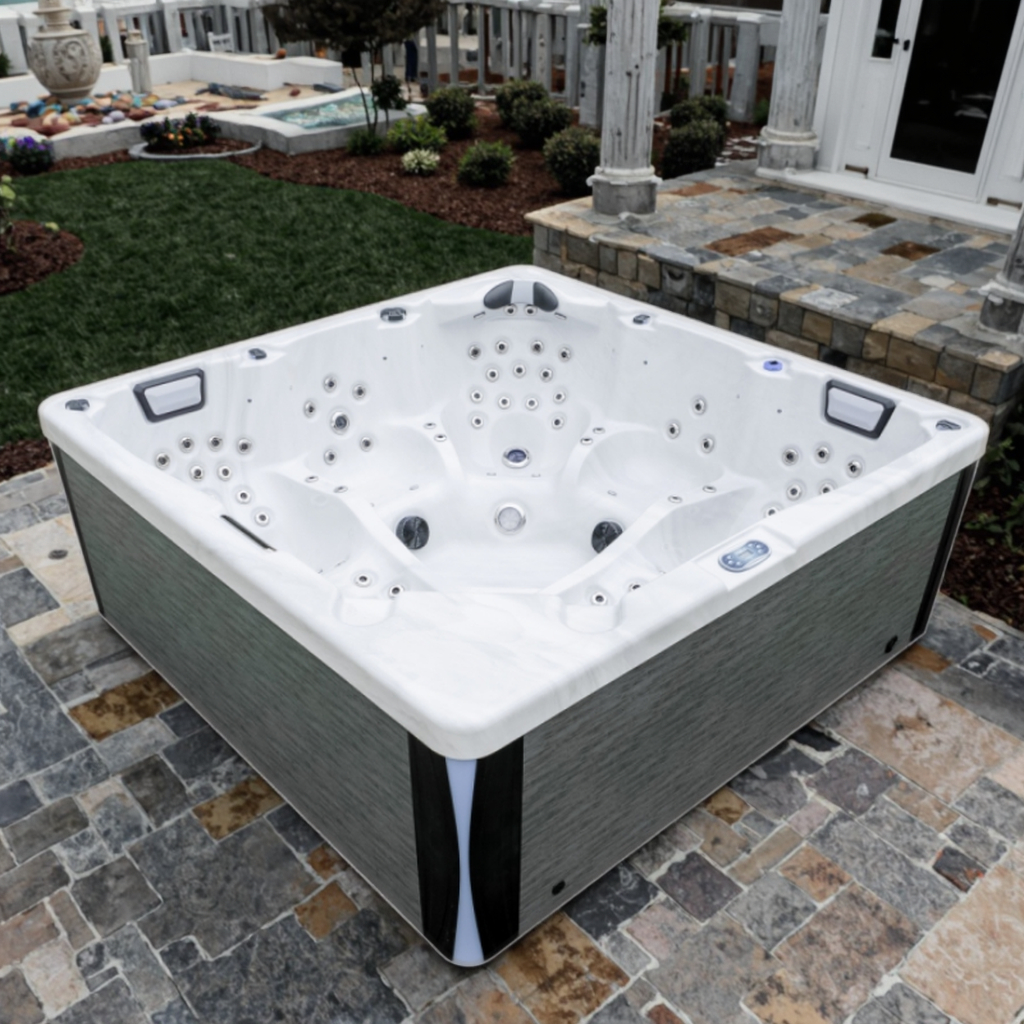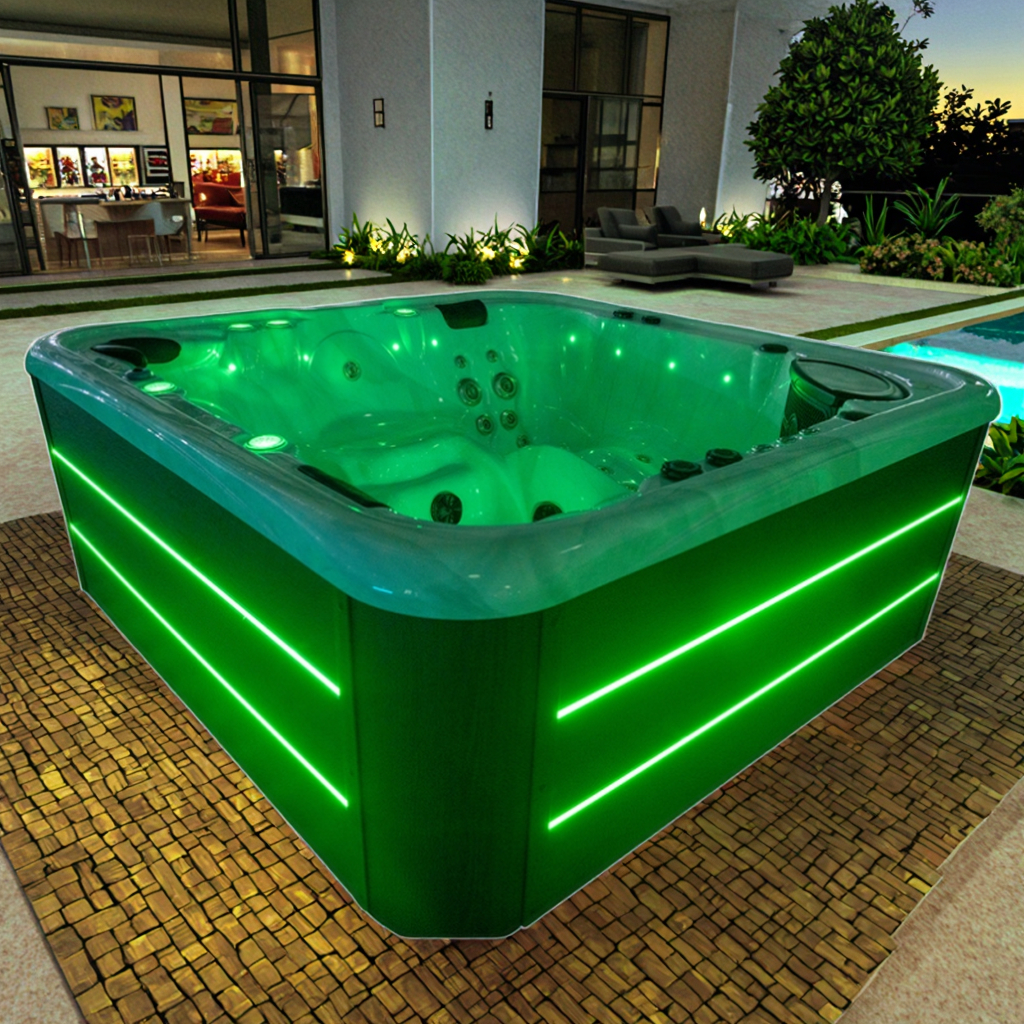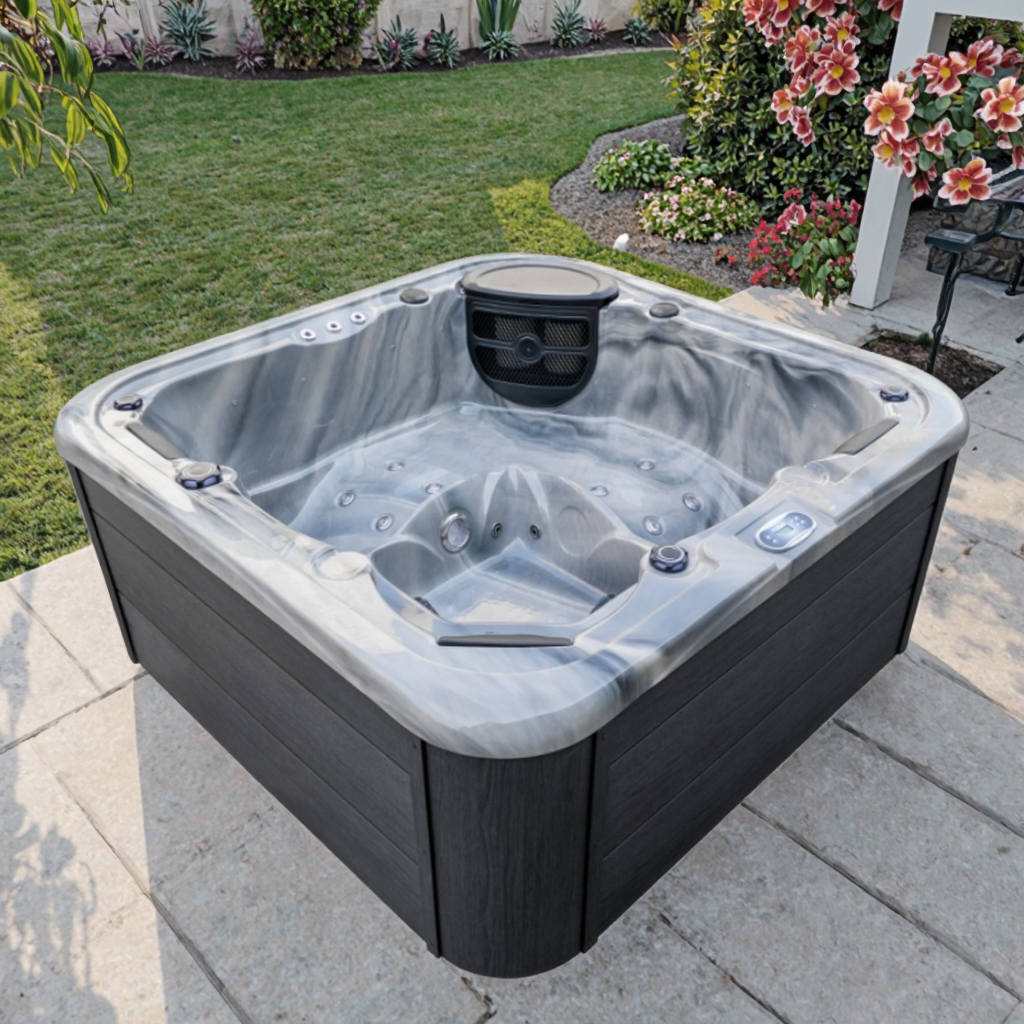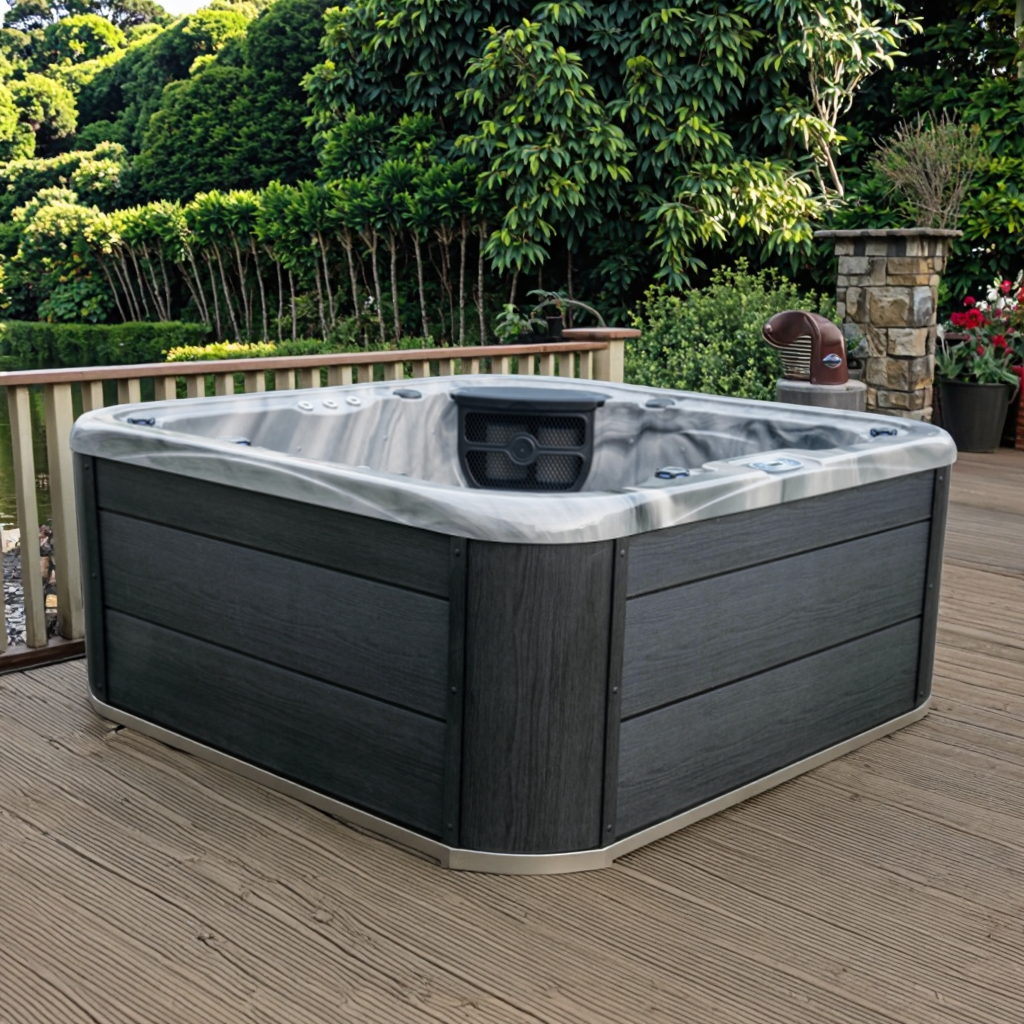
What are the advantages and disadvantages of acrylic spa hot tubs?
2025-11-05 15:35Among many materials, acrylic spa hot tubs have captured a significant market share due to their excellent performance, attractive appearance, and reasonable cost. When choosing a hot tub, many consumers face a core question: "Is an acrylic spa hot tub good?"
To answer this question, a detailed, objective, and systematic analysis of the advantages and disadvantages of acrylic spa hot tubs is essential from multiple perspectives. Only with a full understanding of its performance characteristics can you make the best decision for your needs.
This article, focusing on the keyword "acrylic spa hot tub," will delve into various aspects of its performance, including structural characteristics, comfort, maintenance costs, durability, and environmental adaptability, and provide professional answers to commonly asked questions.

What is an acrylic spa hot tub?
Acrylic spa hot tubs are typically made of a synthetic polymer called polymethyl methacrylate (PMMA). This material is thermoformed at high temperatures and reinforced with glass fiber, resulting in a hot tub body with excellent heat resistance and gloss. Most acrylic spa hot tubs also come with insulation, support structures, jet systems, and controls to meet the modern user's comprehensive needs for hydrotherapy, massage, warmth, and aesthetics.
Acrylic spa hot tubs are widely used in homes, hotels, resorts, and wellness facilities due to their superior physical and chemical properties. While not the only choice (other materials available include cast iron, enamel, ceramic, stainless steel, stone, and fiberglass), they are often considered one of the best overall value-for-money options.
What are the advantages of acrylic spa hot tubs?
Advantages of acrylic spa hot tubs:
1. Lightweight and easy to install
2. Excellent thermal insulation
3. Smooth and comfortable surface
4. Attractive appearance and strong plasticity
5. Easy to clean and maintain
6. Reasonable cost and high cost-effectiveness
1. Lightweight and easy to install
Acrylic's low density makes it lighter than materials like cast iron and ceramic. This greatly simplifies transportation, handling, and installation, making it a preferred choice for high-rise residential buildings or locations with limited floor support. During installation, acrylic spa hot tubs, thanks to their structural flexibility, can be easily adapted to various bathroom layouts. This advantage makes them highly adaptable and popular.
2. Excellent Thermal Insulation
Acrylic is a highly insulating material. Its low thermal conductivity prevents hot water from cooling rapidly in a bathtub. Therefore, acrylic spa hot tubs offer excellent energy savings and water temperature maintenance, making them particularly suitable for environments requiring extended hydrotherapy or hot baths.
Compared to metal or ceramic bathtubs, acrylic bathtubs maintain the set temperature longer, improving bathing comfort while reducing heating frequency and energy consumption.
3. Smooth and Comfortable Surface
The polished surface of acrylic spa hot tubs offers a smooth, soft feel and is scratch-resistant, surpassing many hard materials in terms of safety and comfort. This smooth, rounded surface reduces the risk of slips and bumps, especially for families with elderly or children. Furthermore, acrylic bathtubs can often be designed with a variety of ergonomically curved shapes to better conform to the body's contours and enhance the bathing experience.
4. Beautiful Appearance and Highly Flexible
Acrylic material has excellent thermoforming capabilities, allowing manufacturers to design acrylic spa hot tubs in a variety of colors, shapes, and configurations to meet diverse market needs, including oval, square, round, built-in, and freestanding.
In terms of color, the common acrylic spa hot tub finishes, such as white, beige, gray, and high-gloss black, can also be customized to suit different user aesthetics and decorating styles.
5. Easy to Clean and Maintain
Acrylic spa hot tubs are naturally stain-resistant, and their non-porous surface resists grime and dirt. Regular cleaning with a mild detergent keeps the tub looking pristine. Even minor scratches can be restored to a lustrous shine by sanding or polishing.
Because its surface resists scaling and bacterial growth, it's also ideal for daily home spa use, ensuring high hygiene standards.
6. Affordable Cost and High Performance
Compared to ceramic, cast iron, or natural stone bathtubs, acrylic spa hot tubs have lower manufacturing costs and lower installation and maintenance costs. Therefore, their overall cost-effectiveness is moderate, making them the preferred choice for most mid- to high-end consumers.

What are the Disadvantages of Acrylic Spa Hot Tubs?
Despite their significant advantages, acrylic spa hot tubs are not without flaws. When purchasing, users need to weigh their limitations to ensure the user experience meets their expectations.
Disadvantages of Acrylic Spa Hot Tubs:
1. Surface easily scratched
2. Limited high-temperature resistance
3. Susceptible to aging and discoloration
4. Less load-bearing than heavier materials
5. Limited environmental friendliness and recyclability
1. Surface easily scratched
Although acrylic has a smooth and beautiful surface, it is a relatively soft plastic material and is susceptible to small scratches when rubbed against metal or hard objects. While these scratches may not appear noticeable, excessive accumulation can affect the overall aesthetics. To avoid this, avoid using hard cleaning tools or placing metal utensils inside the tub.
2. Limited High-Temperature Resistance
Although acrylic spa hot tubs perform reliably in normal hot water, their maximum heat resistance is typically around 80°C, making them unable to withstand extremely high temperatures for extended periods. Accidentally filling them with boiling water or using high-temperature steam devices can cause deformation or cracking.
Thus, extreme temperature fluctuations should be avoided during use to extend their lifespan.
3. Susceptibility to Aging and Discoloration
Although acrylic is treated with certain UV protection, prolonged exposure to direct sunlight or the use of inferior cleaning agents can cause the surface to lose its luster and even turn yellow.
This problem is more pronounced in outdoor use or in poorly ventilated bathrooms, requiring appropriate maintenance measures such as sunshades and regular polishing to slow aging.
4. Less Load-Bearing Capacity Than Heavy-Duty Materials
Although acrylic spa hot tubs are strong enough for general household use, their structural support relies heavily on an external frame or base. Under heavy loads (such as multiple bathers or the use of hydrotherapy jets), if the support structure is not secure, the tub may deform.
Therefore, when installing a large acrylic spa hot tub, special attention should be paid to the load-bearing capacity of the floor and the base reinforcement design.
5. Limited Environmental Protection and Recyclability
Compared to some natural materials such as cast iron or ceramic, acrylic is a non-biodegradable synthetic material. Its production process emits certain volatile organic compounds (VOCs), which may result in restrictions in areas or projects with high environmental standards.
Although some high-end acrylic brands claim that their material is partially recyclable, the actual recycling rate is low. Therefore, environmentally conscious users should be aware of this potential drawback.

Who is an acrylic spa hot tub suitable for?
Based on the above analysis of advantages and disadvantages, acrylic spa hot tubs are more suitable for the following user types:
· Comfort and aesthetics: Families who prioritize a sleek appearance and ergonomic design.
· Residential spaces with limited space but a need for a hot tub: Lightweight materials facilitate transport and assembly.
· Frequent users who require consistent water temperature: For example, daily bathing or home spas.
· Budget-conscious consumers: Suitable for average families with a good experience.
Not suitable for those who require extreme impact resistance or extreme high-temperature tolerance, or those planning to install outdoors in the sun. Ceramic, stone, or steel bathtubs may be better suited.
Should I choose an acrylic spa hot tub?
As a modern, practical, aesthetically pleasing, and cost-effective bathing solution, acrylic spa hot tubs are suitable for most homes and light commercial settings. They excel in heat retention, comfort, design, and ease of cleaning, making them one of the most popular types of hot tubs on the market.
Of course, for highly frequent use and demanding durability and load-bearing capacity, users will need to consider additional reinforcement measures or alternative materials based on their specific circumstances.
Before making a purchase decision, it is recommended that users comprehensively weigh the pros and cons of acrylic spa hot tubs based on their needs, installation environment, and budget to select the most suitable product.

What payment methods does LOVIA SPA accept?
LOVIA SPA primarily accepts T/T payments, with a 30% deposit and 70% balance before shipment. This secure payment method ensures safe transactions for wholesale, bulk, and retail orders. Buyers can request factory quotes, low prices, promotions, and customized spa solutions.
LOVIA SPA products are CE, ETL, SAA, ROHS, REACH, and ISO9001 certified. By paying directly to the factory, buyers can purchase high-quality spas at competitive prices while receiving professional support and timely delivery.
